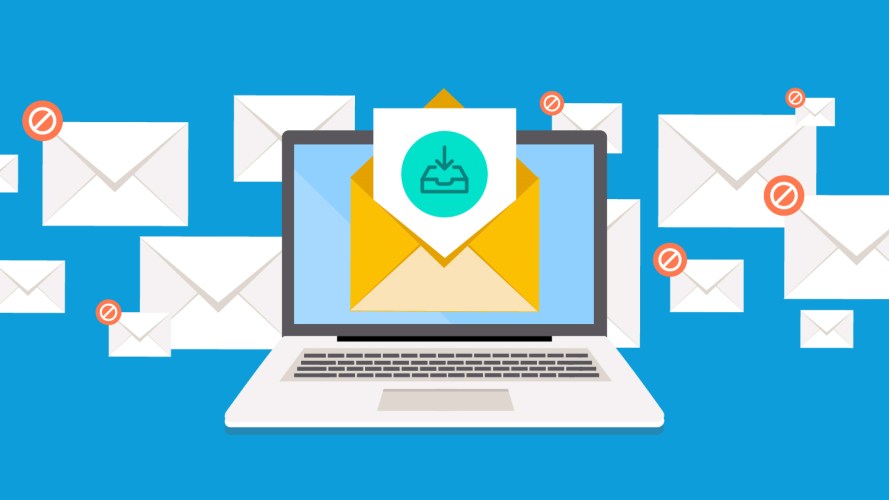B2B Email Marketing Best Practices: What You Need To Know Now

Our email deliverability expert answers pressing questions about B2B email marketing best practices.
Guide to B2B email marketing best practices
- Understanding common problems in the B2B email marketing space
- How to handle non-human interactions in B2B email marketing
- B2B email marketing best practices for acquisition and compliance
- Top B2B email marketing best practices
B2B email marketing has its own unique set of challenges for companies trying to market their products and services to other companies. The prevalence of inbound filtering, non-human interactions, such as inflated bot clicks and even the subscriber opt-in process can vary greatly from the B2C space.
I chatted with John Turner, Deliverability Architect for Salesforce supporting our customers in the EMEA region. We discussed B2B email marketing best practices, from opt-in tips to the impact of the Email Sender Guidelines in the B2B space.
I’ve had the pleasure of working with John for eight years and have always appreciated his ability to take complex topics and make them easy to understand. In addition to his daily responsibilities to our customers, John authored a Trailhead course called Email Deliverability Essentials. If you find anything you read here useful, be sure to check out the course.
Understanding common problems in the B2B email marketing space
While the email deliverability space is typically focused on sending high volumes of mail to customer audiences, there is a unique use case for businesses that need to market to other businesses. What is B2B email sending, and what makes it unique compared with typical commercial mail?
Turner: B2B email is when businesses send email to other businesses rather than to an individual consumer or personal consumer mailbox with a goal of selling their goods or services to the business itself. When you’re sending mail to corporate email servers, your success will always be influenced and dictated by the strictness of internal policy settings set by server administrators and the email security software that is used to manage corporate email delivery.
In your experience, what are some of the most common problems sending mail in the B2B space?
Turner: It’s normal to see some isolated cases of delayed delivery as spam filters, policy processing and mail routing settings can further manipulate this result. The more complicated and sophisticated the levels of protection, the more layers of security, scans and threat detection checks that are needed to be bypassed beforehand.
Isolated cases of email blocking are totally normal too because of the variable levels of strictness being enforced across organizations you send to. You are more likely to see this happen when sending to a .mil or .edu domain. Government agencies and educational institutions have protocols in place to protect themselves, and they want to keep the majority of external mail and scammers out.
In more extreme cases you may have to accept that you might not always be able to reach the intended recipient via email without an “allowlist exception” being made for your sending IPs and domains. This would require the administrator of the receiving domain to add explicit rules to their inbound filters which allow your mail onto their network.
How to handle non-human interactions in B2B email marketing
We know that non-human interactions such as opened emails attributed to Apple MPP and security filters are an issue in the business to consumer (B2C) space. Is this the same for B2B mail?
Turner: Yes, absolutely, and I would say it’s a far more common occurrence in the B2B realm too. Businesses want to protect employees from spam, viruses and malicious email attacks. How many reports in the media have you heard over the years of businesses being targeted with spear phishing attacks that result in sensitive information being stolen, leaked or misused?
Marketing messages will be under greater scrutiny and checks for that very reason. This means you will see emails being scanned, opened, and links clicked automatically, which can lead to false positives or over inflated KPIs. That behavior can make it much harder to track direct user engagement.
B2B email marketing best practices for acquisition and compliance
Subscriber acquisition methods are different in the B2B space than in typical B2C mail. How can companies do lead and prospect mailing safely, and ensure they are following B2B email marketing best practices while remaining compliant with laws?
Turner: There’s so many acquisition methods and sources available now, and if you’re not careful, some of those can lead to fragmented results and increased risk particularly if there’s an absence of permission. Setting clear transparency on list collection purpose, ensuring internal alignment and awareness of email best practices while adopting permission-based sending at all times helps build the foundation for sustainable growth and deliverability success.
Making consent informed rather than assumed remains the best way to reduce the risk of potential non-compliance. Always check local laws in your region to better understand what is deemed permissible and always avoid making assumptions when it comes to consent.
Many business domains are hosted at large mailbox providers like Google Workspace and Outlook 365. How does this factor into email delivery for B2B mail?
Turner: You’re dealing with the same underlying spam filtering engines here. However with business mail you also have the added layer of advanced custom filtering options. Each business can have uniquely defined settings and extra control in how it handles content or mail routing. Those custom user-defined settings can sometimes lead to subtle differences in mail behavior.
Third-party blocklist providers like Spamhaus are also known to be used to help identify and block potential spammers. Be cognizant of your engagement rates by keeping an eye out for any noticeable drops in open or click rates that could be attributed to filtering issues. Blocking issues will be more obvious to identify in your tracking. You can engage our Support team if you need additional help.
Are domains hosted at Google Workspace subject to the recently announced email sender guidelines (i.e. authentication requirements, volume limitations, complaint rates, etc…) ?
Turner: That’s a great question. Not all domains hosted at Google are subject to this policy. It is only applicable when you’re sending to personal Gmail accounts. If you’re sending to Google Workspace accounts only, it won’t apply.
Top B2B email marketing best practices
Thank you for sharing your expertise with us John. To close things out, can you share your top three B2B email marketing best practices?
- Always check the setup and configuration of your sending infrastructure and ensure all authentication options are configured for sending (SPF, DKIM and DMARC).
- Avoid cold email marketing. It’s largely unwanted and spam-like in behavior. This tactic has a higher risk of generating spam complaints and too many complaints will damage your sending infrastructure and sender reputation.
- Business filters are known to place a greater emphasis on content checks and the reputation of any links. Be sure to test content ahead of time to help isolate potential issues.
Back to top
Improve your email sender score
Want to avoid the spam filter and make sure your messages reach inboxes? Our experts help set your email strategy up for success by defining key terms and explaining how new rules from Google and Yahoo impact email marketers.

































